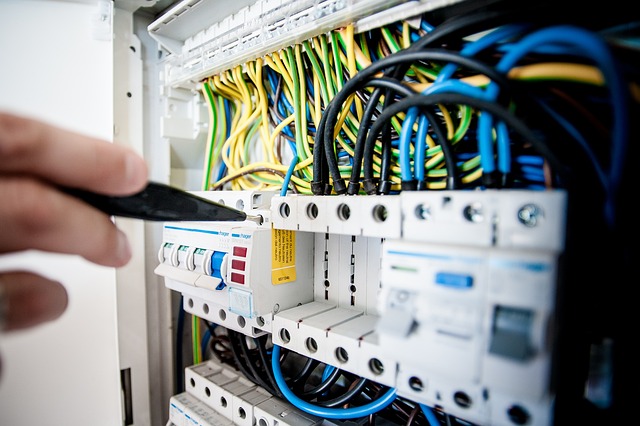Concrete foundation cracks, caused by various factors like soil settlement or poor quality, require specific repair methods. Evaluating crack severity is crucial for deciding between replacement and repair. Professional techniques include epoxy injections and carbon fiber reinforcement. Advanced technology enhances inspection accuracy, and innovative materials offer durable solutions. Long-lasting results depend on thorough assessments, proper techniques, high-quality materials, and regular maintenance. Repair costs vary based on damage extent, with sealing being cheaper while extensive repairs can be expensive. Homeowners should understand insurance coverage for crack repair.
Residential concrete foundation cracks can range from minor aesthetic issues to serious structural problems. Understanding the causes and types of these cracks is crucial for effective crack repair. This article delves into the intricacies of residential concrete foundation repairs, offering insights on assessment, common repair methods like epoxy injections and carbon fiber reinforcement, and when to opt for replacement over repair. We explore technological advancements in foundation repair and best practices to ensure lasting results. Additionally, cost considerations and homeowner insurance claims are discussed for comprehensive crack repair guidance.
Understanding Residential Concrete Foundation Cracks: Causes and Types

Concrete foundation cracks can range from hairline fissures to larger, more noticeable gaps, and understanding their causes is essential for effective crack repair. These cracks often develop due to various factors, including settlement or movement of the soil beneath the foundation, structural defects, poor concrete quality, or extreme weather conditions like freezing and thawing cycles. Each type of crack has a unique origin and may require specific attention during the repair process.
There are several types of residential concrete foundation cracks: hairline cracks, vertical cracks, diagonal cracks, and horizontal cracks. Hairline cracks are typically caused by minor settlement and can often be addressed with surface repairs. Vertical and diagonal cracks, on the other hand, suggest more significant structural issues or soil movement, demanding more comprehensive crack repair solutions to prevent further damage and ensure the stability of the foundation.
Assessing the Extent of Damage: Crack Repair Prioritization

When assessing a residential concrete foundation for repair, prioritizing crack repair is paramount. The first step involves meticulously examining the structure to identify cracks and assess their severity. Cracks can vary greatly in size, from hairline fractures to substantial gaps that compromise structural integrity. Professional inspectors use specialized tools and expertise to pinpoint these issues, determining which cracks require immediate attention and which can be addressed later.
The prioritization of crack repair is based on both the aesthetic impact and potential structural implications. Broad, deep cracks hint at more severe problems, often indicating settlement or movement in the foundation. These should be repaired swiftly to prevent further damage. Smaller, superficial cracks might be less pressing but still require attention to maintain the longevity of the foundation and preserve the home’s value.
Common Methods for Crack Repair: Epoxy Injections to Carbon Fiber Reinforcement

When it comes to crack repair in residential concrete foundations, there are several methods that professionals employ to ensure structural integrity and longevity. One of the most common and effective techniques involves using epoxy injections. This process begins by drilling small holes near the crack’s surface, creating a path for the epoxy to flow into. The powerful adhesive resin is then pumped into these holes, filling the crack from within and bonding with the surrounding concrete. As the epoxy sets, it strengthens the affected area, preventing further damage and shifting.
Another innovative approach to crack repair is the use of carbon fiber reinforcement. These thin, flexible strips are imbedded directly into fresh concrete or attached to existing cracks after cleaning and preparing the surface. Carbon fiber offers exceptional tensile strength-to-weight ratio, making it an ideal solution for reinforcing stressed areas. By strategically placing these reinforcements, professionals can stabilize the foundation, reduce crack propagation, and enhance overall structural stability. This method is particularly useful for wider cracks that pose a significant risk to the building’s integrity.
When to Consider Foundation Replacement vs. Repair

When evaluating the health of your home’s foundation, deciding between replacement and repair can be challenging. One crucial factor to consider is the extent of damage. If you notice extensive cracks—wider than a finger—or uneven floors, it might indicate severe structural issues. In such cases, foundation replacement could be the more sustainable option in the long term, as it addresses the root cause rather than merely covering up problems.
On the other hand, if the damage is localized, such as small cracks or bowing walls, repair techniques like epoxy injection or carbon fiber wrapping can be highly effective. These methods are less disruptive and cost-efficient for minor issues. Crack repair not only stabilizes the structure but also prevents further deterioration, giving you more time before considering more significant structural interventions.
The Role of Technology in Modern Foundation Repair

In today’s digital era, technology plays a pivotal role in modern foundation repair, revolutionizing how issues like crack repair are approached and executed. Advanced tools and equipment, such as drones and thermal imaging cameras, enable professionals to assess hard-to-reach areas and detect even the subtlest signs of damage with remarkable accuracy. This not only saves time but also ensures that every aspect of the foundation is thoroughly inspected, promoting more effective crack repair strategies.
Furthermore, innovative materials and methods have emerged, offering durable and long-lasting solutions for concrete foundation repairs. For instance, advanced epoxies and polyurethanes are now commonly used to fill cracks, providing superior strength and resistance to water intrusion. This technology not only enhances the structural integrity of buildings but also extends their lifespan, making it a game-changer in the field of foundation repair.
Ensuring Long-Lasting Results: Best Practices for Concrete Foundation Repair

When it comes to residential concrete foundation repair, achieving long-lasting results is paramount to ensure the structural integrity and longevity of your home. The process of crack repair is a meticulous one; professionals begin by assessing the extent of damage, identifying the root cause, whether it’s due to settlement, shifting soil, or poor initial construction. Once diagnosed, specialized equipment and techniques are employed to fix these cracks. This often involves injecting epoxy or other strengthening compounds into the cracks to create a robust, lasting seal.
Best practices dictate that repair work should address not just the visible cracks but also any underlying issues. Proper drainage systems should be installed or improved to mitigate water pressure against the foundation walls. Additionally, regular inspection and maintenance are crucial; catching small cracks early can prevent them from becoming more severe, costly problems. Using high-quality materials and hiring licensed, experienced contractors guarantees that your concrete foundation repair stands the test of time, protecting your home from potential structural damage for years to come.
Cost Considerations and Homeowner Insurance Claims for Foundation Repair

When it comes to residential concrete foundation repair, cost considerations are a primary concern for homeowners. The price for crack repair can vary widely depending on several factors, including the severity of the damage, the size and location of cracks, and whether there’s a need for structural support. Small cracks may only require sealing or filling, which is relatively inexpensive. However, extensive repairs involving steel reinforcement or complete foundation replacement can cost tens of thousands of dollars.
Homeowner insurance policies typically cover structural damage caused by events like settling, heaving, or water penetration. However, not all policies include concrete foundation repair in their coverage. It’s essential to review your policy or contact your insurer to confirm what is and isn’t covered. When filing an insurance claim for crack repair, be prepared with detailed estimates from qualified contractors to support your request. Understanding both the cost of repairs and your insurance coverage will help you make informed decisions regarding the best course of action for addressing foundation issues.
